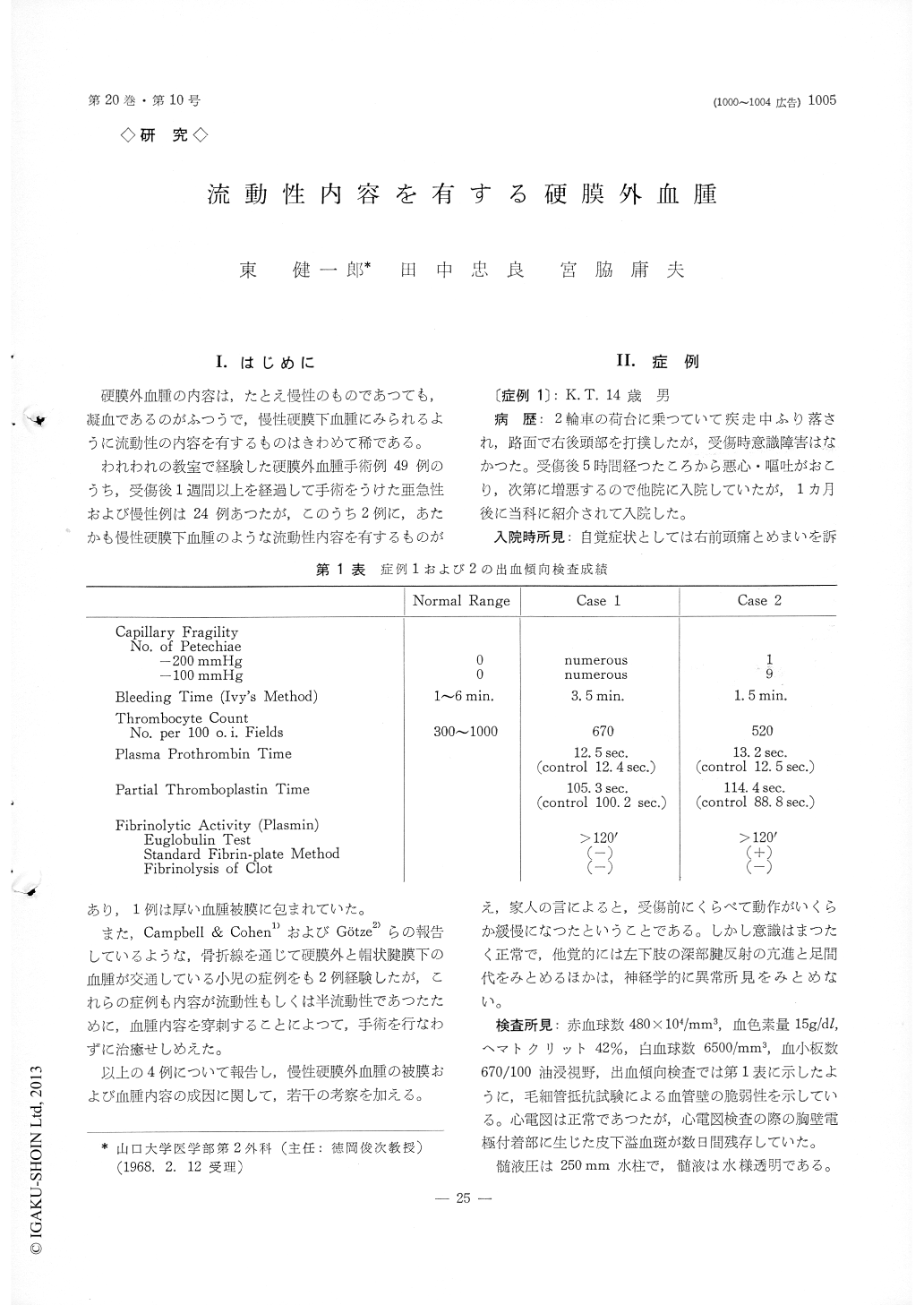Japanese
English
- 有料閲覧
- Abstract 文献概要
- 1ページ目 Look Inside
I.はじめに
硬膜外血腫の内容は,たとえ慢性のものであつても,凝血であるのがふつうで,慢性硬膜下血腫にみられるように流動性の内容を有するものはきわめて稀である。
われわれの教室で経験した硬膜外血腫手術例49例のうち,受傷後1週間以上を経過して手術をうけた亜急性および慢性例は24例あったが,このうち2例に,あたかも慢性硬膜下血腫のような流動性内容を有するものがあり,1例は厚い血腫被膜に包まれていた。
Four cases of extradural hematomas with liquid contents were reported.
The first case was operated on 33 days following head injury, and the liquid extradural hematoma encapsulated by thick membrane as like as chronic subdural hematoma was evacuated. This case show-ed general capillary fragility.
The second case also had a liquid extradural he-matoma without visible membrane, which had taken place following the evacuation of subdural hematoma 14 days prior to the operation. A defect of the func-tion of blood coagulation was detected in this case preoperatively.
These dysfunctions of the hemostasis were likely to be responsible for the pathogenesis of such par-ticular appearance of the extradural hematoma.
The other two cases reported were the children who had both of extradural and subgaleal semiliquid hematomas communicating each other through wide-ly separated skull fractures. The hematomas were successfully treated by repeated puncture. The car-otid angiograms carried out thereafter revealed the disappearance of avascular areas which had initially been shown in both cases.
Chronic extradural hematoma has been regarded as a rare occasion. Our experience, however, in-dicates that the extradural hematoma having pro-longed course before its detection may not be so infrequent situation. This may be due to populariza-tion of the carotid angiography which enables to detect the cases without typical symptoms.
Extradural hematoma usually consists of a clot but not liquid contents, while the hematoma mem-brane might develop as same opportunity as that of chronic subdural hematoma, and that becomes recognizable around 3 weeks following the initial bleeding.

Copyright © 1968, Igaku-Shoin Ltd. All rights reserved.


